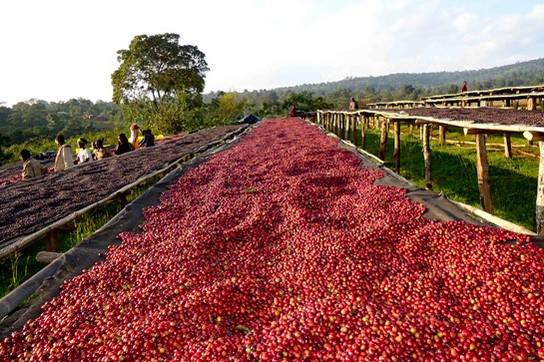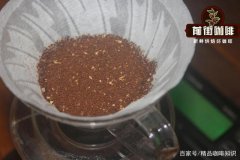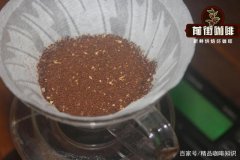The development history of boutique coffee, the detailed origin story of the red cherry project and its significance.
Ethiopia is located in East Africa, and there are as many as 5, 000 varieties of Ethiopian native coffee beans found in the forests of the Kaffa region in the south of Ethiopia. Ethiopia is believed to be the birthplace of coffee-local residents became excited, powerful and even crazy when they found that cattle and sheep ate a plant with a red fruit. The locals picked the fruit to try, and slowly found themselves refreshed; so they began to pick them and plant them deliberately, because they came from Kaffa, so the world gradually named it Coffee.

Ethiopia, as the birthplace of coffee beans, the development rate of local tree species is very low, so we usually call Ethiopian tree species native species, because we have no idea which coffee trees are made up of this piece of land.
In order to improve the quality of coffee and the quality of life of farmers. In 2007, Trabocca, a Dutch trader, launched the "OPERATION CHERRY RED PROJECT" Red Cherry Project. It is purely to encourage farmers to improve the quality of coffee beans. At the beginning of the harvest season in the producing area, Trabocca will specify a harvest plan for the microclimate area to harvest 100% ripe red coffee cherries by hand, with a yield of about 1500 kg-3000 kg.
The Red Cherry Project invested $5000 in 2008 to purchase new sun drying racks. In 2009, another $8000 was invested in the procurement of new sun drying racks and sunshade nets. A $9000 generator was invested in 2010 and a further $10000 was invested in 2011 to improve some local coffee transport roads to make transporting coffee more convenient and efficient. Trabocca offers interest-free loans to buy new coffee cherry meat removers and coffee bean sorters. In order to facilitate suppliers' procurement, a high-quality Addis Ababa coffee cup testing laboratory was built with an investment of US $14000 in 2012.

Specifically, Red Cherry plans to increase the purchase price of high-quality raw coffee beans to encourage coffee farmers to pay more attention to every process of picking and processing coffee beans. The coffee beans produced in this way are of better quality and taste, and can be better recognized in the end market, thus balancing the relatively high purchase price of coffee.
Trabocca has long been a major buyer of Ethiopian coffee, which not only improves the quality of coffee cherries, but also gives back to small coffee farmers at higher prices to improve their quality of life. No matter what kind of doctrine, this approach is commendable.
Important Notice :
前街咖啡 FrontStreet Coffee has moved to new addredd:
FrontStreet Coffee Address: 315,Donghua East Road,GuangZhou
Tel:020 38364473
- Prev

How to judge the grindability of hand-brewed coffee? The relationship between grindability and roasting degree of hand-brewed coffee.
The effect of grinding degree on coffee grinding is very important for coffee, good coffee depends on good grinding degree, and the size of coffee particles directly affects the efficiency of hot water for wet extraction of coffee. In theory, the more uniform the coffee particle value is, the more consistent the overall extraction efficiency is, and the better the coffee flavor is. The concentration and extraction rate decrease with the thickening of the grinding degree, and increase with the finer the grinding degree.
- Next

The practice of boutique coffee, the origin story of hand-brewed coffee and the basic teaching of making it.
Handmade coffee is hand-brewed coffee in the early 20th century, Ms. Merita, a German woman, was not satisfied with the taste of coffee brewed in a percolation pot and the coffee grounds in the cup, so she began to develop alternative brewing methods. She pokes a hole in the metal can with a nail and cooks the coffee with blotting paper. The finished coffee is less bitter than the coffee brewed in the percolation pot, and there is no coffee grounds to make trouble. Melita applied for a special application for this filter.
Related
- Beginners will see the "Coffee pull flower" guide!
- What is the difference between ice blog purified milk and ordinary milk coffee?
- Why is the Philippines the largest producer of crops in Liberia?
- For coffee extraction, should the fine powder be retained?
- How does extracted espresso fill pressed powder? How much strength does it take to press the powder?
- How to make jasmine cold extract coffee? Is the jasmine + latte good?
- Will this little toy really make the coffee taste better? How does Lily Drip affect coffee extraction?
- Will the action of slapping the filter cup also affect coffee extraction?
- What's the difference between powder-to-water ratio and powder-to-liquid ratio?
- What is the Ethiopian local species? What does it have to do with Heirloom native species?

